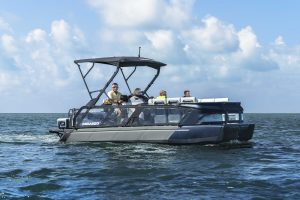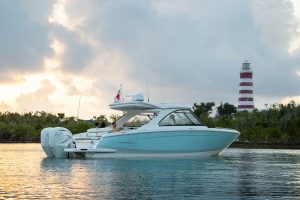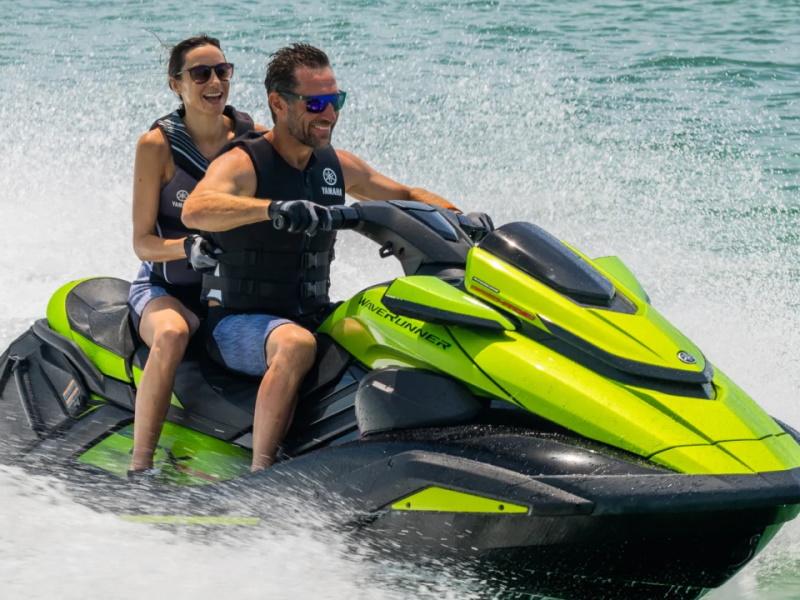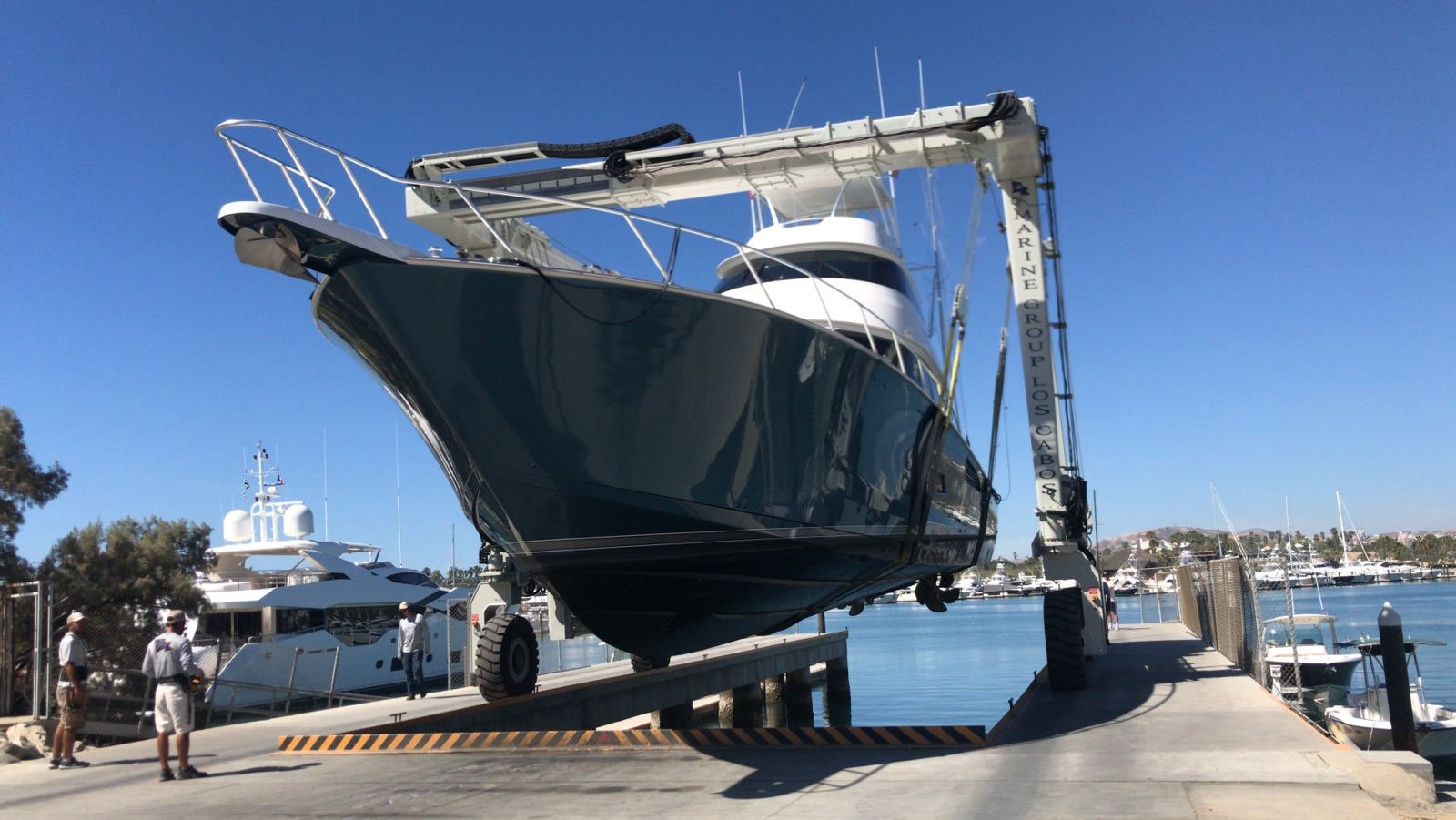Utility Boats
Utility Boats: Versatile Vessels for All Your Water Needs
Utility boats are versatile watercraft that serve a variety of purposes. They are designed to be functional and practical, rather than luxurious or recreational. Utility boats are typically smaller in size than other types of boats and are often used for fishing, hunting, and transportation.
Understanding Utility Boats Utility boats are designed for practicality and functionality. They are built to withstand harsh weather conditions and rough waters. Utility boats are typically made of aluminum or fiberglass, which makes them lightweight and durable. They have a flat bottom, which makes them stable and easy to maneuver in shallow waters.
Key Features of Utility Boats Utility boats come with a variety of features that make them suitable for different purposes. Some of the key features include a flat bottom, which provides stability and makes them easy to maneuver in shallow waters, and a wide beam, which provides ample space for cargo and passengers. Utility boats also come with different engine options, fuel types, and hull designs, which can be customized to suit individual needs.
Key Takeaways
- Utility boats are designed for practicality and functionality, rather than luxury or recreation.
- They are typically smaller in size than other types of boats and are often used for fishing, hunting, and transportation.
- Utility boats come with a variety of features that make them suitable for different purposes, including a flat bottom, wide beam, and customizable engine options.
Understanding Utility Boats
Utility boats are versatile boats that are designed for a variety of purposes. They are generally made of aluminum and are powered by an outboard engine. These boats are a popular choice for recreational boating, fishing, and as workboats. They are also a good choice for novice boaters due to their relatively low maintenance costs.
Utility boats come in different sizes and shapes. They are typically between 12 to 20 feet in length and can be used for different activities. Some of the most common uses of utility boats include fishing, water sports, and transportation. They can also be used for work purposes such as carrying equipment and supplies.
One of the advantages of utility boats is their affordability. They are generally less expensive than other types of boats, making them an attractive option for those who want to enjoy boating without breaking the bank. They are also easy to operate, making them ideal for beginners.
Utility boats are designed to be durable and tough. They can withstand harsh weather conditions and are built to last. They are also lightweight, making them easy to transport and launch.
In summary, utility boats are versatile, affordable, and durable boats that are designed for a variety of purposes. They are a popular choice for recreational boating, fishing, and work purposes. They are easy to operate and maintain, making them an ideal choice for novice boaters.
Key Features of Utility Boats
Utility boats are designed to be versatile and practical, making them a popular choice for many boaters. They are typically smaller in size and have a flat bottom, which makes them ideal for navigating shallow waters and tight spaces. Here are some of the key features of utility boats:
Hull Types
Utility boats come in two main hull types: flat bottom and V-hull. Flat bottom utility boats have a completely flat bottom, which makes them very stable and easy to maneuver in calm waters. V-hull utility boats, on the other hand, have a V-shaped bottom that is designed to cut through choppy waters, making them a better choice for rougher conditions.
Beam and Length
Utility boats are typically smaller in size than other types of boats, with a beam (width) of around 5-6 feet and a length of 10-16 feet. This makes them easy to transport and store, as well as maneuver in tight spaces.
Capacity and Stability
Utility boats are designed to be lightweight and easy to handle, but they still have a good amount of capacity for passengers and gear. They can typically accommodate 2-4 people, and some models have built-in storage compartments for gear and supplies. Utility boats are also very stable, thanks to their wide beam and flat bottom design.
Transom and Outboards
The transom is the back of the boat, where the outboard motor is attached. Utility boats are designed to be used with outboard motors, which are typically small and lightweight. The size of the outboard motor will depend on the size and weight of the boat, but most utility boats can be powered by a motor with 10-25 horsepower.
Utility boats can come with a variety of different features, such as side consoles for steering and controls, or tiller handles for a more traditional boating experience. Overall, utility boats are a great choice for anyone who wants a practical, versatile boat that is easy to handle and maintain.
Types of Utility Boats
Utility boats are versatile and affordable boats that are great for a variety of purposes, from fishing and swimming to simply cruising around the lake. They are also easy to operate and maintain, making them ideal for beginners. Here are some of the most popular types of utility boats:
Jon Boats
Jon boats are small, lightweight utility boats that are perfect for boating in shallow water. They are typically made of aluminum or fiberglass and range in length from 10 to 18 feet. Jon boats have a flat bottom and a squared-off bow and stern, which makes them very stable and easy to maneuver. They are ideal for fishing, hunting, and exploring small bodies of water.
Alumacraft Boats
Alumacraft boats are known for their durability and reliability. They are made of high-quality aluminum and are designed to withstand harsh weather conditions and rough waters. Alumacraft boats come in a variety of sizes and styles, including the V-Series, which is perfect for lake shore activities.
Lowe Boats
Lowe boats are another popular brand of utility boats. They are known for their high-quality construction and attention to detail. Lowe boats come in a variety of sizes and styles, including the Utility V-Series, which is perfect for fishing and hunting.
Crestliner Boats
Crestliner boats are designed for the serious angler. They are built with high-quality materials and are designed to handle rough waters and heavy loads. Crestliner boats come in a variety of sizes and styles, including the Retriever Jon Series, which is perfect for hunting and fishing.
Lund Boats
Lund boats are known for their durability and versatility. They are designed to handle a variety of conditions, from calm lakes to rough seas. Lund boats come in a variety of sizes and styles, including the Jon Boat Series, which is perfect for fishing and hunting.
G3 Boats
G3 boats are designed for the serious angler and are built to last. They are made of high-quality materials and are designed to handle rough waters and heavy loads. G3 boats come in a variety of sizes and styles, including the Jon Boat Series, which is perfect for fishing and hunting.
In conclusion, there are many different types of utility boats available on the market today. Each type has its own unique features and benefits, so it's important to choose the one that best suits your needs and budget. Whether you're looking to fish, hunt, or just cruise around the lake, there's a utility boat out there for you.
Engine Options for Utility Boats
Utility boats are versatile vessels that can be used for a variety of purposes, from fishing and hunting to transportation and recreation. Choosing the right engine for your utility boat is crucial to ensure optimal performance and efficiency.
Outboard-4S Engines
Outboard-4S engines are a popular choice for utility boats due to their reliability, fuel efficiency, and ease of maintenance. These engines are available in a range of horsepower (hp) options, from 2.5 hp to 300 hp, making them suitable for different boat sizes and applications. They are also lightweight and compact, which makes them easy to install and maneuver.
When selecting an outboard-4S engine for your utility boat, consider the size and weight of your boat, the type of water you will be navigating, and your budget. Higher horsepower engines are generally more expensive but offer better speed and power. Lower horsepower engines are more affordable and fuel-efficient but may not be suitable for larger boats or rough waters.
Inboard Engines
Inboard engines are another option for utility boats, particularly larger vessels that require more power and torque. These engines are typically installed inside the boat's hull, which provides better weight distribution and stability. Inboard engines are available in gasoline or diesel options and can range from 100 hp to over 1000 hp.
Inboard engines are ideal for heavy-duty applications such as towing, water sports, and commercial use. They offer better acceleration, speed, and maneuverability compared to outboard engines. However, they are more expensive to purchase, install, and maintain than outboard engines.
Inboard/Outboard Engines
Inboard/outboard engines, also known as stern drives, combine the features of inboard and outboard engines. These engines are installed inside the boat's hull but have a propeller that extends outside the hull. They offer the best of both worlds, providing excellent speed, maneuverability, and fuel efficiency.
Inboard/outboard engines are available in gasoline or diesel options and can range from 135 hp to over 400 hp. They are suitable for a wide range of boat sizes and applications, from small recreational boats to larger commercial vessels. However, they are more complex and expensive to install and maintain compared to outboard engines.
Electric Engines
Electric engines are a newer option for utility boats, offering a more eco-friendly and quiet alternative to traditional gasoline or diesel engines. These engines are powered by batteries and can provide up to 20 hp of power. They are suitable for small boats and calm waters, such as lakes and rivers.
Electric engines are easy to install and maintain, and they offer lower operating costs and emissions compared to traditional engines. However, they have limited range and speed, and they may not be suitable for larger boats or rough waters.
In summary, when selecting an engine for your utility boat, consider the size and weight of your boat, the type of water you will be navigating, and your budget. Outboard-4S engines are a reliable and affordable option for most utility boats, while inboard and inboard/outboard engines are ideal for heavy-duty applications. Electric engines are a newer and eco-friendly option but have limited range and speed.
Material and Construction
When it comes to utility boats, the material and construction are two of the most important factors to consider. These boats are designed to be durable and reliable, and the right materials and construction techniques can make all the difference.
One of the most popular materials for utility boats is aluminum. This material is lightweight, strong, and resistant to corrosion, making it ideal for boats that need to withstand harsh conditions. Aluminum boats are also easy to maintain and repair, which can save owners time and money in the long run.
Another important factor in the construction of utility boats is whether they are all-welded or not. All-welded boats are made from a single piece of metal, which eliminates the need for rivets or screws. This makes the boat stronger and more durable, as there are no weak points where water can seep in. All-welded boats are also easier to clean and maintain, as there are no crevices or seams where dirt and debris can accumulate.
In addition to the materials used, the design and construction of the boat also play a role in its durability and reliability. Utility boats are typically designed with a flat bottom and a shallow draft, which allows them to navigate shallow waters and avoid obstacles. They may also have reinforced keels or chines, which help to protect the boat from damage when it comes into contact with rocks or other objects.
Overall, the material and construction of a utility boat are critical factors to consider when choosing a boat that is durable and reliable. Aluminum boats that are all-welded are often the best choice, as they offer strength, durability, and ease of maintenance. However, other materials and construction techniques may also be suitable depending on the specific needs of the owner.
Utility Boat Specifications
Utility boats are designed to be versatile and durable, with a focus on functionality rather than luxury. There are a variety of specifications to consider when choosing a utility boat, including size, weight, capacity, and construction material.
Size and Weight
Utility boats come in a range of sizes, from small 12-foot models to larger 20-foot boats. The size of the boat will depend on the intended use, with smaller boats suitable for fishing and other recreational activities, while larger boats are better suited for commercial or industrial use.
The weight of the boat will also vary depending on the size and construction material. Aluminum boats are generally lighter than fiberglass or wooden boats, making them easier to transport and launch.
Capacity
The capacity of a utility boat refers to the maximum weight it can carry, including passengers, gear, and equipment. It is important to choose a boat with a capacity that meets your needs, as overloading can be dangerous and affect the boat's performance.
Construction Material
Utility boats can be constructed from a variety of materials, including aluminum, fiberglass, and wood. Aluminum boats are popular for their durability, lightweight design, and low maintenance requirements. Fiberglass boats are known for their sleek design and smooth ride, while wooden boats offer a classic look and feel.
Additional Features
Many utility boats come with additional features to enhance their functionality and convenience. Some common features include:
- Rod holders for fishing
- Built-in storage compartments for gear and equipment
- Trolling motors for quiet operation
- Livewells for keeping fish alive
- Anchors and anchor storage
- Navigation lights for safe operation at night
Overall, the specifications of a utility boat will depend on the intended use and personal preferences of the buyer. It is important to carefully consider each specification and choose a boat that meets your needs and budget.
Optional Features and Customization
Utility boats are designed to be versatile and functional, but they can be customized to meet specific needs and preferences. Many manufacturers offer a range of optional features that can be added to a boat to enhance its performance, comfort, and convenience.
One of the most common optional features for utility boats is a motor upgrade. A more powerful engine can increase speed and acceleration, making it easier to navigate through rough waters or carry heavy loads. Other popular options include GPS navigation systems, fish finders, and depth sounders, which can help boaters navigate and locate fish more easily.
For those who plan to use their utility boat for fishing, there are a variety of customization options available. Many manufacturers offer livewells, rod holders, and other fishing-specific features that can be added to a boat. Some boats even come with built-in tackle storage compartments and cutting boards, making it easier to organize and prepare fishing gear.
Another popular customization option is seating. Many utility boats come with standard bench seats, but boaters can choose to upgrade to swivel seats or captain's chairs for added comfort and support. Some boats even offer customizable seat configurations, allowing boaters to choose the number and placement of seats based on their needs.
Other optional features for utility boats include:
- Bimini tops and other types of canvas covers to protect boaters from the sun and rain
- Trolling motors for slow and precise maneuvering
- Stainless steel or aluminum propellers for increased durability and performance
- Trailer upgrades, such as LED lights and disc brakes, for easier towing and launching
Overall, the customization options for utility boats are vast and varied, allowing boaters to create a boat that is perfectly suited to their needs and preferences. Whether it's upgrading the motor, adding fishing-specific features, or customizing the seating, there are plenty of options available to enhance the performance and functionality of a utility boat.
Buying a Utility Boat
When it comes to buying a utility boat, there are a few things to keep in mind. Understanding pricing, dealer prep and fees, and finding a local dealer are all important factors to consider.
Understanding Pricing
Pricing for utility boats can vary depending on the make and model, as well as any additional features or customization options. It's important to research and compare prices from different manufacturers and dealers to ensure you're getting the best deal.
Dealer Prep and Fees
In addition to the cost of the boat itself, there may be additional fees for dealer prep and other services. These fees can vary depending on the dealer, so it's important to ask for a breakdown of all costs before making a purchase.
Finding a Local Dealer
Finding a reputable dealer is crucial when buying a utility boat. It's important to do your research and read reviews from other customers to ensure you're working with a trustworthy dealer. Additionally, choosing a local dealer can be beneficial for ongoing maintenance and repair needs.
Overall, buying a utility boat requires careful consideration of pricing, dealer prep and fees, and finding a reputable local dealer. By doing your research and asking the right questions, you can find the perfect boat for your needs at a fair price.
Fuel Options
Utility boats come in different sizes and shapes, and the type of fuel they use will depend on the boat's engine and its intended use. Here are the most common fuel options for utility boats:
Gas
Gasoline is the most common fuel used in utility boats. It is readily available at most marinas and gas stations, making it convenient for boat owners. Gasoline engines are generally less expensive and easier to maintain than diesel engines. However, gasoline engines are less fuel-efficient and produce more emissions than diesel engines.
When using gasoline, it is important to follow the manufacturer's recommendations for the correct fuel type and octane rating. Some boat engines require a special mixture of oil and gas, so it is important to check the owner's manual before creating these mixtures. Ethanol-free gas is ideal, but E10 gas (10% ethanol) will also work. Make sure to only use pumps that are clearly labeled with their fuel types.
Diesel
Diesel engines are commonly used in larger utility boats. They are more fuel-efficient and produce fewer emissions than gasoline engines. Diesel engines are also more durable and have a longer lifespan than gasoline engines. However, diesel engines are generally more expensive and require more maintenance than gasoline engines.
When using diesel, it is important to use the correct grade of diesel fuel and to follow the manufacturer's recommendations for fuel additives. Diesel fuel is less volatile than gasoline and is less likely to ignite, making it safer to use. Diesel engines require a different type of oil than gasoline engines, so it is important to check the owner's manual for the correct oil type and viscosity.
Overall, the choice of fuel for a utility boat will depend on the boat's engine and its intended use. Gasoline engines are generally less expensive and easier to maintain, while diesel engines are more fuel-efficient and produce fewer emissions. It is important to follow the manufacturer's recommendations for the correct fuel type and to use the correct grade of fuel for the engine.
Trailerable Vessels
Trailerable vessels are a popular choice for boaters who want to explore different waterways without the hassle of docking and storing a larger boat. These vessels are designed to be easily towed behind a vehicle and launched at a boat ramp or other suitable location.
Types of Trailerable Vessels
There are several types of trailerable vessels available, each with their own unique features and benefits. Some of the most common types include:
-
Fishing boats: These boats are designed with anglers in mind and may have features such as livewells, rod holders, and fish finders.
-
Pontoon boats: These boats are popular for their stability and spaciousness, making them a great choice for families and groups.
-
Personal watercraft: Also known as jet skis, these vessels are designed for one or two people and are great for exploring shallow waters and performing tricks.
-
Small cruisers: These boats are larger than traditional fishing boats and may have a cabin or other amenities for overnight trips.
Benefits of Trailerable Vessels
One of the biggest benefits of trailerable vessels is their versatility. Boaters can easily transport their vessel to different bodies of water, allowing them to explore new areas and try out different types of boating. Additionally, trailerable vessels are often more affordable than larger boats, making them a great option for those on a budget.
Another benefit of trailerable vessels is their convenience. Boaters can store their vessel at home, eliminating the need for expensive marina fees or storage costs. Additionally, trailerable vessels can be launched at a variety of locations, making it easier to find a suitable spot to launch and explore.
Considerations for Trailerable Vessels
When choosing a trailerable vessel, there are several factors to consider. These may include:
-
Size and weight: Make sure the vessel is within the towing capacity of the vehicle and trailer.
-
Storage: Consider where the vessel will be stored when not in use.
-
Launching and retrieval: Make sure the vessel can be easily launched and retrieved at a variety of locations.
-
Features and amenities: Consider what features and amenities are important, such as a cabin, bathroom, or fishing equipment.
Overall, trailerable vessels are a great option for boaters who want to explore different waterways without the hassle and expense of a larger boat. With a variety of types and features available, there is a trailerable vessel to suit almost any boater's needs and preferences.
Hull Designs
When it comes to utility boats, the hull design is a crucial factor to consider. The hull design determines the boat's stability, speed, maneuverability, and performance in different water conditions. Here are some of the most common hull designs used in utility boats:
Moderate Draft
Utility boats with moderate draft hull designs have a hull shape that allows them to navigate shallow waters with ease while still maintaining stability. These boats have a flat bottom and minimal deadrise angle, which makes them ideal for fishing, hunting, and other activities in shallow waters. They are also easy to maneuver, making them suitable for beginners.
Narrow Beam
Utility boats with narrow beam hull designs have a slim profile that makes them suitable for use in narrow waterways. These boats are designed to maximize speed and maneuverability, making them ideal for water sports, fishing, and other activities that require speed and agility. However, narrow beam boats may not be as stable as other hull designs, making them less suitable for rough waters.
Deep Vee
Utility boats with deep vee hull designs have a V-shaped hull that cuts through the water with ease, making them ideal for use in rough waters. These boats have a high deadrise angle, which provides excellent stability and maneuverability. They are also faster than other hull designs, making them suitable for water sports and other activities that require speed.
Planing
Utility boats with planing hull designs have a flat bottom that allows them to plane on top of the water at high speeds. These boats are designed for speed and maneuverability, making them suitable for water sports and other activities that require speed and agility. However, planing boats may not be as stable as other hull designs, making them less suitable for rough waters.
Modified Vee
Utility boats with modified vee hull designs have a hull shape that combines the features of a deep vee and planing hull design. These boats have a V-shaped hull that provides excellent stability and maneuverability in rough waters, while also allowing them to plane on top of the water at high speeds. Modified vee boats are versatile and suitable for a wide range of activities, including fishing, water sports, and transportation.
In addition to the hull designs, boat manufacturers also use gauges to measure the boat's speed, fuel level, and other important parameters. Gauges can be analog or digital, and they provide valuable information that helps the boat operator to navigate safely and efficiently.
Overall, the hull design is a critical factor to consider when choosing a utility boat. Each hull design has its unique features and benefits, and the choice ultimately depends on the intended use of the boat.
Frequently Asked Questions
What are some common types of aluminum fishing boats?
Aluminum fishing boats come in various types, including Jon boats, bass boats, and utility boats. Jon boats are flat-bottomed boats that are ideal for fishing in shallow waters. Bass boats are designed for freshwater fishing and have a V-shaped hull that provides a smooth ride even in choppy waters. Utility boats are versatile and can be used for a variety of activities, including fishing, hunting, and transportation.
What are the best brands for aluminum bass boats?
Some of the best brands for aluminum bass boats include Tracker, Lund, and Alumacraft. These brands are known for their high-quality construction, durability, and reliability. They offer a range of models with various features and sizes to suit different needs and preferences.
What are some small fishing boats with motors?
Some small fishing boats with motors include Jon boats, dinghies, and inflatable boats. Jon boats are affordable and versatile, while dinghies are lightweight and easy to transport. Inflatable boats are also lightweight and can be easily stored when not in use.
Where can I find aluminum utility boats for sale?
Aluminum utility boats can be found for sale at various dealerships, online marketplaces, and classified ads. Some popular online marketplaces include Boat Trader, eBay, and Craigslist. It is important to do research and compare prices and features before making a purchase.
What are some features of a 16 ft V hull aluminum boat?
A 16 ft V hull aluminum boat typically has a V-shaped hull that provides a smooth ride in choppy waters. It may also come equipped with a motor, a livewell, storage compartments, and fishing rod holders. The boat may have a capacity of up to 4 people and can be used for fishing, hunting, or transportation.
Where can I find used 14ft aluminum boats for sale?
Used 14ft aluminum boats can be found for sale at various dealerships, online marketplaces, and classified ads. Some popular online marketplaces include Boat Trader, eBay, and Craigslist. It is important to inspect the boat thoroughly and ask for maintenance records before making a purchase.





















